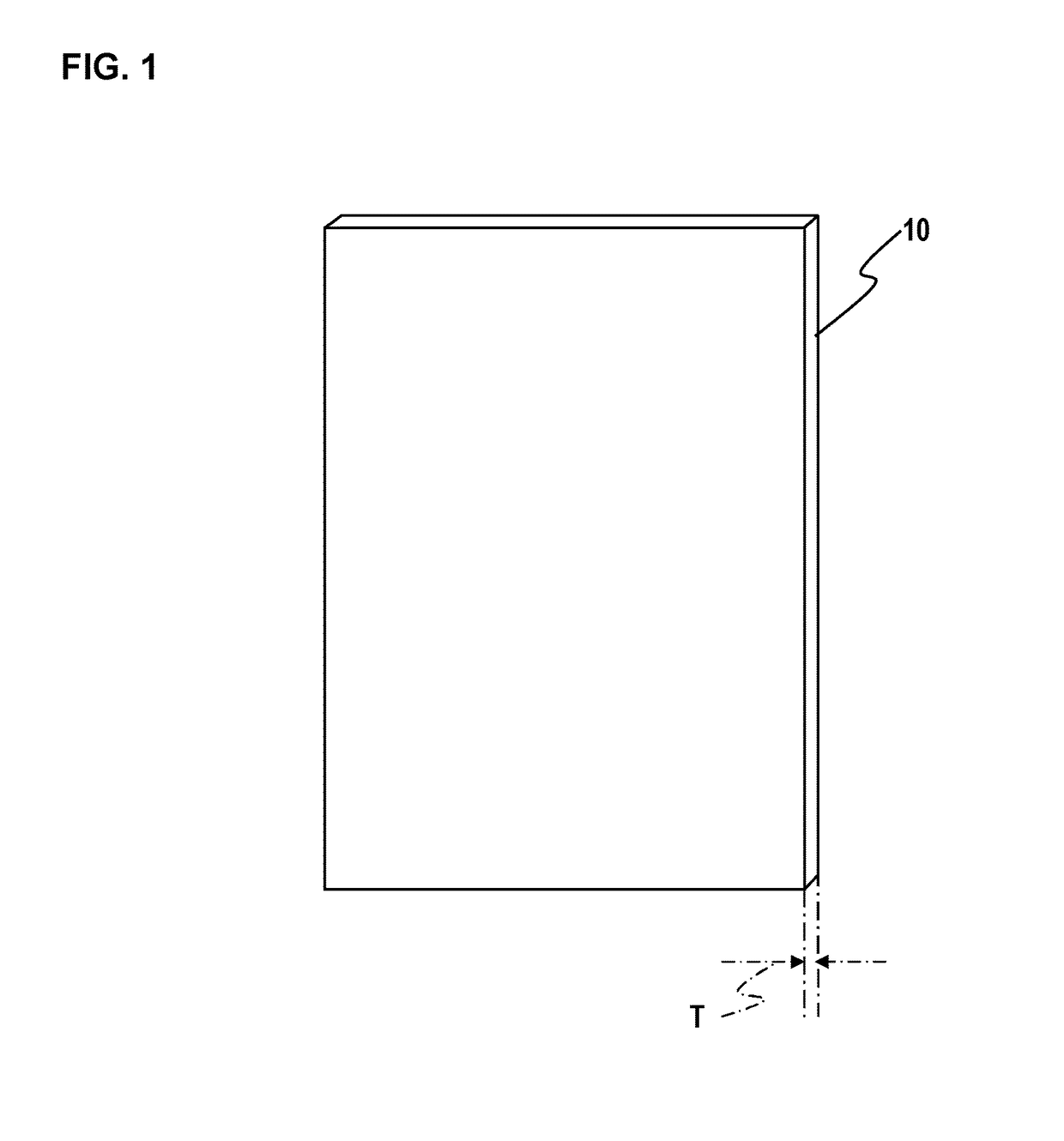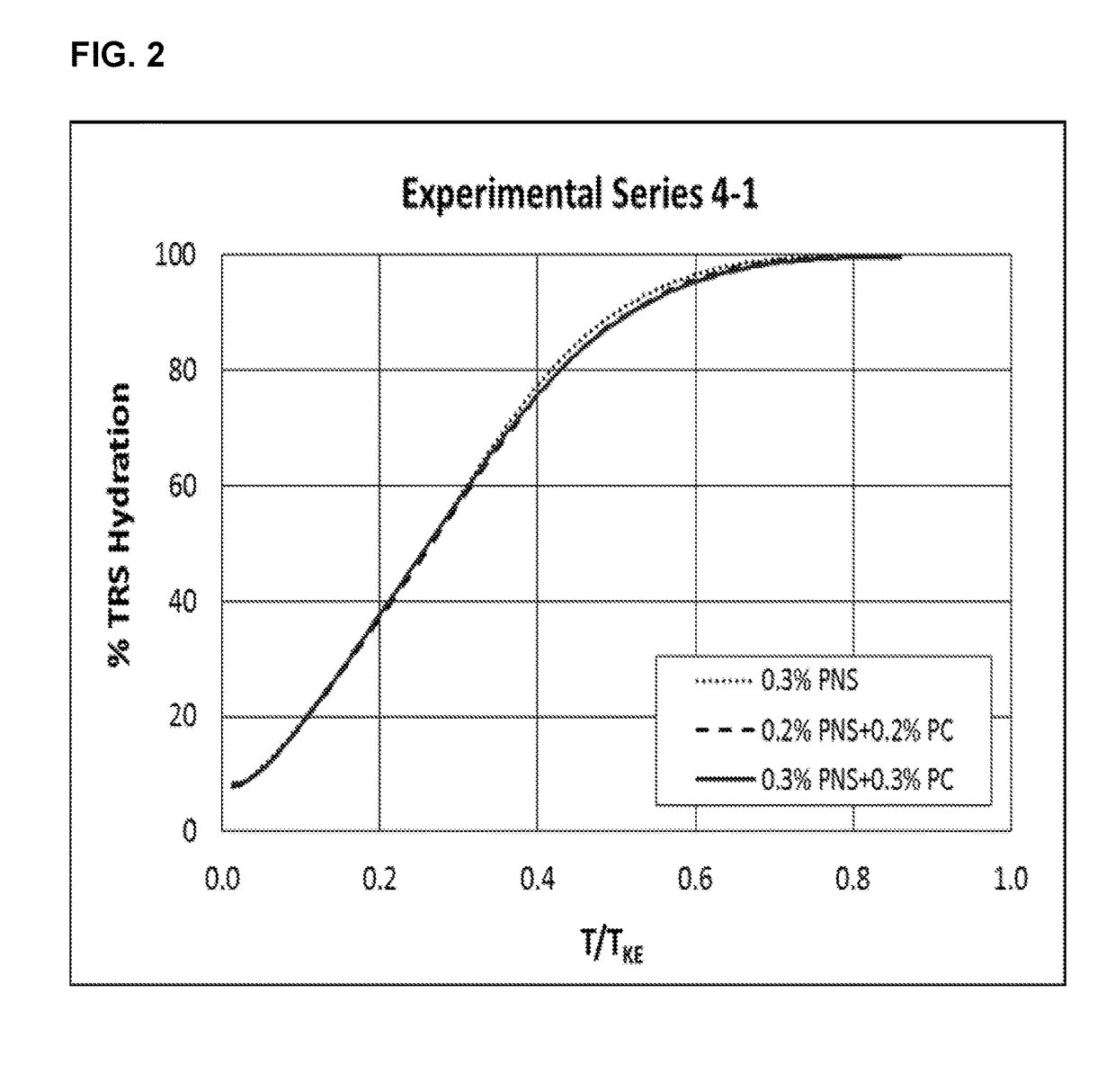Gypsum slurries with linear polycarboxylate dispersants
a polycarboxylate dispersant and polymer technology, applied in the direction of water-setting substance layered product, chemistry apparatus and processes, other domestic articles, etc., can solve the problems of occupying a large amount of space to stack and store wallboard, affecting the quality of gypsum slurries, and causing a large amount of waste of gypsum slurries
- Summary
- Abstract
- Description
- Claims
- Application Information
AI Technical Summary
Benefits of technology
Problems solved by technology
Method used
Image
Examples
example 1
[0158]New linear polycarboxylates were compared against Polynaphthalene sulfonate at the same dosage. Water usage was adjusted to achieve a 7 inch slump (Water to Stucco weight Ratio, WSR).
[0159]The linear polycarboxylate anionic dispersants were synthesized by radical polymerization in aqueous media, using a radical initiator (inorganic peroxide) and standard change transfer agent (mercaptan). Typically a polydispersity above 2.0 is obtained and the polymer end groups are theorized to be a mixture of inactivated versions of the initiator, chain transfer agent, and monomeric units.
[0160]Water demand of gypsum slurries dispersed with Linear Polycarboxylate dispersants (PC1-PC8 made by Ruetgers Polymers) was tested and compared with Polynaphthalene sulfonate (DURASAR Polynaphthalene sulfonate calcium salt available from Ruetgers Polymers) dispersed gypsum slurries. Synthetic beta calcium hemihydrate with 1% wt (of stucco weight) of Ball Mill Accelerator and 3% wt pre-gelled starch add...
example 2
[0165]New linear polycarboxylates were compared against Polynaphthalene sulfonate and conventional branched polycarboxylate (also known as a polycarboxylate ether or PCE) at the same dosage using a more challenging stucco containing clays. Water usage was adjusted to achieve a 7 inch slump (Water to Stucco weight Ratio, WSR). The stucco has 87 wt % Calcium sulfate hem ihydrate, and about 0.6 wt % total clay.
[0166]The linear polycarboxylate anionic dispersants were synthesized by radical polymerization in aqueous media, using a radical initiator (inorganic peroxide) and standard change transfer agent (mercaptan). Typically a polydispersity above 2.0 is obtained and the polymer end groups are theorized to be a mixture of inactivated versions of the initiator, chain transfer agent, and monomeric units.
[0167]Water demand of gypsum slurries dispersed with Linear Polycarboxylate dispersants (PC1, PC4 and PC7 made by Ruetgers Polymers) was tested and compared with Polynaphthalene sulfonate...
example 3
[0170]A blend of the linear polycarboxylate of the present invention with Polynaphthalene sulfonate (PNS) was compared against linear polycarboxylate and was compared against Polynaphthalene sulfonate at the same dosage. Water usage was adjusted to achieve a 6 inch slump (Water to Stucco weight Ratio, WSR).
[0171]The linear polycarboxylate anionic dispersant was synthesized by radical polymerization in aqueous media, using a radical initiator (inorganic peroxide) and standard change transfer agent (mercaptan). Typically a polydispersity above 2.0 is obtained and the polymer end groups are theorized to be a mixture of inactivated versions of the initiator, chain transfer agent, and monomeric units.
[0172]The linear polycarboxylate dispersant had a 60:40 molar ratio of MAA and AMPS and a wt, average molecular weight estimated to be around 15000 Daltons.
[0173]Water demand of gypsum slurries dispersed with Linear Polycarboxylate dispersant made by Ruetgers Polymers was tested and compared...
PUM
| Property | Measurement | Unit |
|---|---|---|
| Fraction | aaaaa | aaaaa |
| Fraction | aaaaa | aaaaa |
| Fraction | aaaaa | aaaaa |
Abstract
Description
Claims
Application Information
 Login to View More
Login to View More - R&D
- Intellectual Property
- Life Sciences
- Materials
- Tech Scout
- Unparalleled Data Quality
- Higher Quality Content
- 60% Fewer Hallucinations
Browse by: Latest US Patents, China's latest patents, Technical Efficacy Thesaurus, Application Domain, Technology Topic, Popular Technical Reports.
© 2025 PatSnap. All rights reserved.Legal|Privacy policy|Modern Slavery Act Transparency Statement|Sitemap|About US| Contact US: help@patsnap.com



